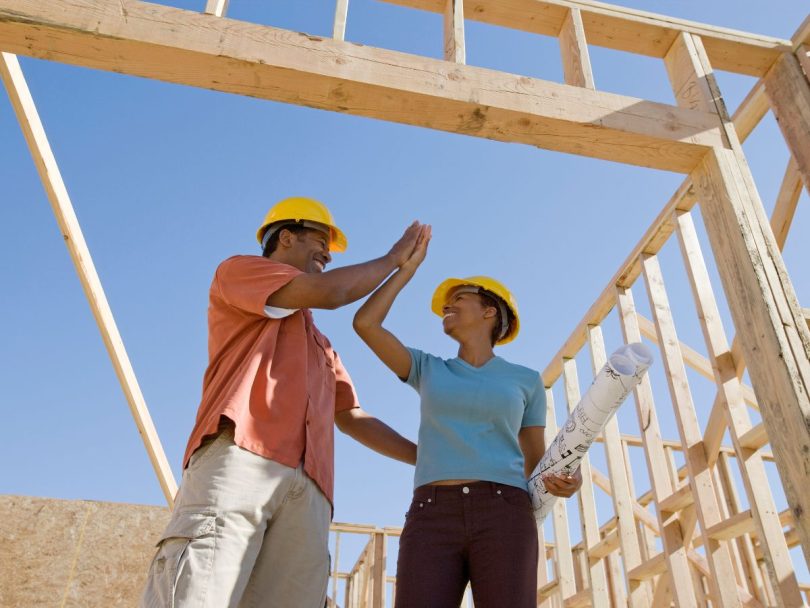Building a new home is a labour of love. The process can take months, and your brisbane home builders will need you to make hundreds of decisions. That might sound daunting, but it doesn’t need to be. A skilled builder can take the work out of planning your new home, so all you’ll need to do is sit back and watch as the project comes together! In this article we’ll take a brief look at the main stages of building a new home in Australia so you know what to expect on your own journey.
1. Pre-Construction and planning
Much of the work of building a house is done during the pre-construction phase, the first step in the house building stages. This is where you’ll meet with your builder to finalise details about the land, the floorplan and any changes you want to make. You’ll also need to meet with your builder’s design team to select colours, fittings, fixtures and other details. Once you’re happy with your design, you can make your deposit and your builder will start obtaining approvals so construction can begin.
This process takes 4-6 weeks depending on how complex your design is and whether any additional engineering is required. You’ll need to pay a 5% deposit as per the Housing Industry Association (HIA) regulations.
2. Base Work
Base work includes anything your site needs to get ready for construction. That often means clearing trees, performing excavation, levelling the block, installing underground services and more. Once the site is prepared, the concrete slab is poured and any other footings are completed.
The base stage can take anywhere between 1-3 weeks. Homes with more complicated raised footings or sloped blocks may take longer. The base stage requires a 15% progress payment as per the HIA.
3. Framing
The skeleton of your new home will now be assembled on the completed foundations. First, walls are marked off and the location of windows, doors, posts and load-bearing beams are noted. Then a framing team will construct and erect the frames. The final stage includes squaring the frames ahead of an inspection by a building surveyor.
Framing typically takes 3-4 weeks. The process can take longer depending on the weather, or it may take less time if your builder uses prefabricated frames. Framing requires a 20% progress payment as per the HIA.
4. Lock-Up
The goal here is to make your home weathertight before internal work begins. Lock-up focuses on installing external bricks and cladding, roofing materials, windows, doors and gutters. At this point licensed trades will also complete rough-ins for plumbing, electrical and HVAC systems. Anything your home needs to be secure and weatherproof will be completed in the lock-up stage.
It takes approximately 4 weeks to complete the lock-up stage. You’ll be required to make a 25% progress payment as per the HIA.
5. Fixing Stage
During this stage the major features are “fixed” to your home. That includes plastering on the walls and ceiling, installing skirting boards and cornices, kitchen cabinetry and flooring. Any wet areas will also receive their waterproofing during the fixing process.
The fixing stage is considered complete once a building inspector has signed off on the work. Depending on the size of your home and the complexity of details such as cornices, the fixing stage typically only takes 2-3 weeks. Along with the fit-off stage, the fixing stage requires a 20% progress payment as per the HIA.
6. Fit-Off Stage
The fit-off stage includes “fitting” all the details of your home. From tapware and shelving to tiling, finalising benchtops and other details, this is where the finishing touches are applied. Fit-off also takes care of finalising the plumbing and electrical installations.
The fit-off stage requires a building inspector’s sign off. Completing the fit-off stage may take 2-3 weeks. Along with the fixing stage, the fit-off stage requires a 20% progress payment as per the HIA.
7. Practical Completion Inspection
The vast majority of the work is now done. Your site supervisor will invite you to the property for a practical completion inspection (PCI). During your PCI your builder will take you through the house to demonstrate its fittings and fixtures. Make a note of any defects or any fixtures that aren’t working – your builder will be responsible for fixing those issues before handover.
It can take between 2-8 weeks to rectify any issues found during the practical completion inspection depending on the availability of materials and trades. You’ll be required to make a 15% final payment as per the HIA.
8. Final Handover
The hard work is done! Pending your final payment, you’ll be able to collect the keys from your builder. Once you have the keys it usually takes another 1-2 weeks before you can move in and settle into your new home.
9. Post-Construction Care
The construction process is done, but most good home builders offer post-construction care. This typically comes in the form of assurances or warranties that last between 3-12 months. Under those assurances, you’ll be able to call on your builder to fix any issues you find during the warranty period. Make sure you’re aware of your contractual rights and don’t be afraid to call your builder back if you need a problem to be repaired!







